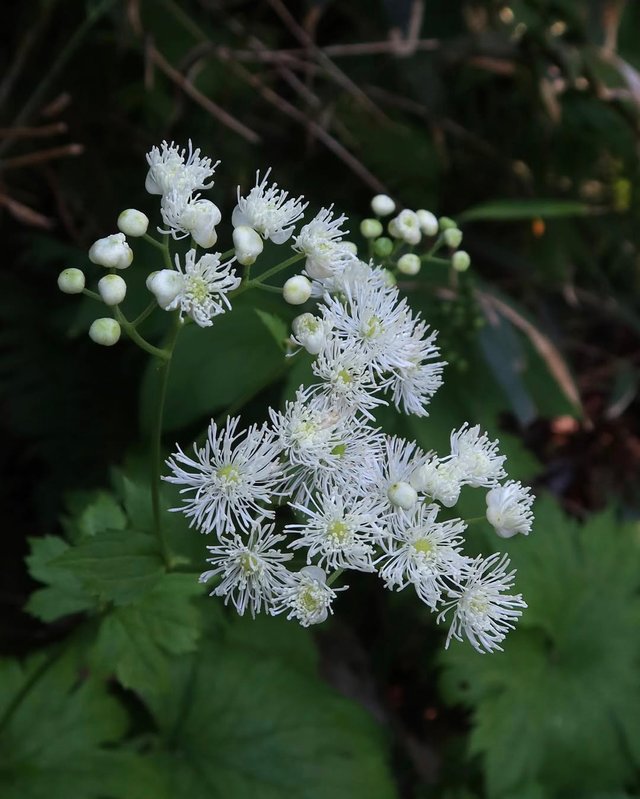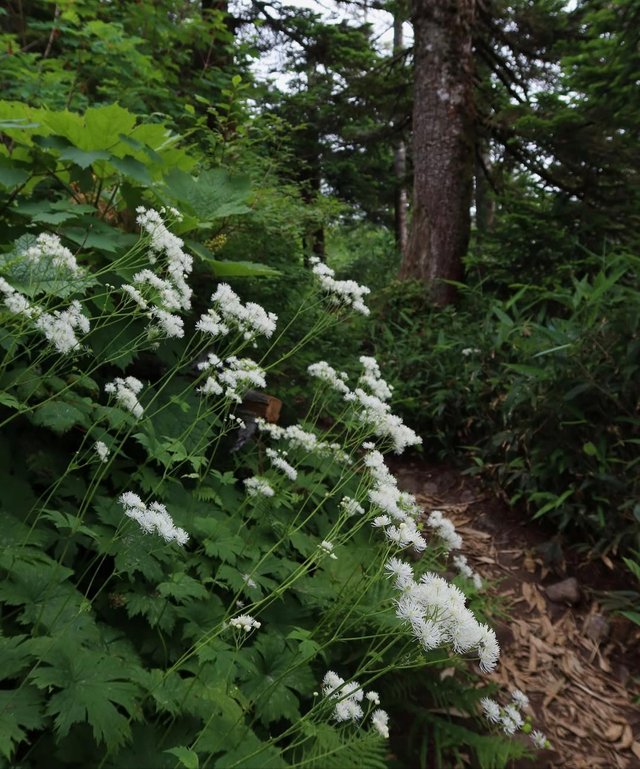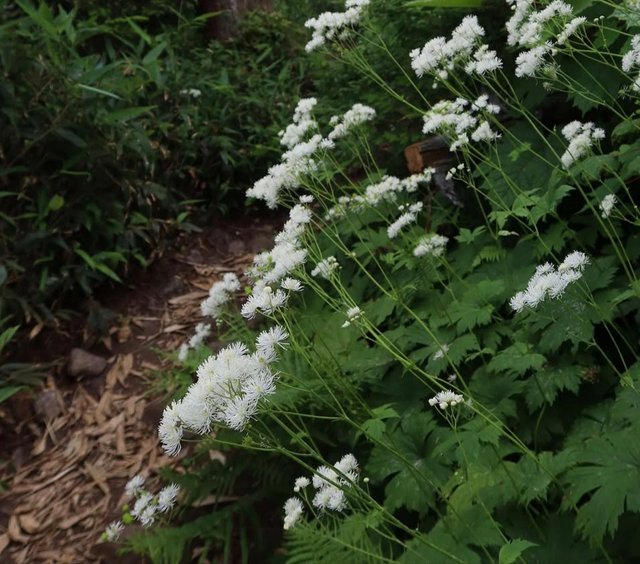Greater meadow-rue
Greater meadow-rue is a tall perennial herbaceous plant native to Europe and parts of Asia and it thrives in moist meadows, woodland edges, and stream banks where the soil is rich and well-drained and the environment is cool and partly shaded. It belongs to the Ranunculaceae family and is recognized for its elegant appearance, bearing tall, upright stems that can reach heights of up to 1.5 meters with attractive foliage and fluffy, ornamental flowers.
The leaves resemble those of columbine, with delicate, finely divided lobes that give the plant a soft, feathery texture and the foliage is typically a bluish-green color that adds to its visual appeal in naturalistic and cottage garden settings. During late spring to early summer, the plant produces large, airy clusters of flowers composed mostly of long, thread-like stamens which give the blooms a fluffy, cloud-like look and the flowers can vary in color from soft pink and lilac to pale purple or white depending on the variety.
Unlike many flowering plants, the showiness of greater meadow-rue flowers is due to the conspicuous stamens rather than the petals, which are often small and inconspicuous or absent altogether. These flowers are highly attractive to pollinators such as bees and butterflies and the plant plays an important ecological role in supporting beneficial insect populations. It is dioecious, meaning male and female flowers occur on separate plants, which contributes to its unique reproductive biology and necessitates cross-pollination for seed production.



